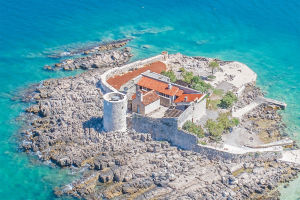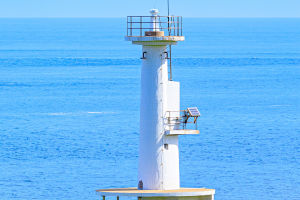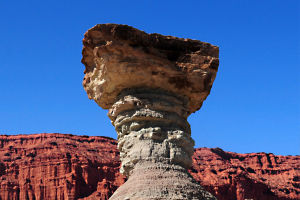"Crown of the Continent" is an apt nickname for a national park that features some of North America's most impressive mountain scenery.
Set in the majestic Rockies of northern Montana, Glacier National Park takes its name from the rivers of ice and glacial forces that shaped its rugged topography over two million years.
In addition to its namesake glaciers, the park is renowned for massive U-shaped valleys and hulking granite peaks carved by long-ago ice flows.
A mosaic of rock, ice, forest, and water like none other in the lower 48 states, the park safeguards one of the nation's "most intact ecosystems," says Andrew Smith of the Glacier National Park Conservancy. "It's also a Dark Sky Park, and visitors can see the Milky Way at night—something increasingly rare in our world."
Glacier at a glance
Location: Montana
Established: 1910
Size: 1,013,322 acres
Annual visitors: 2.9 million (2023)
Visitor centers: Apgar, St. Mary, Logan Pass
Entrance fees: US $35 per vehicle, US $20 per person
Where to find the best views in the park
On its rollercoaster run across the park, Going-To-The-Sun Road offers more spectacular viewpoints than just about any other drive in the National Park System. Logan Pass is a must-stop. But there are lots of panoramic views along the 50-mile route: Jackson Glacier Overlook, Oberlin Bend, Bird Woman Falls Overlook, and every other turnout along the way.
Lakeshores are another great photo op, especially the view from Apgar Village across Lake McDonald; the east side of Swiftcurrent Lake behind the Many Glacier Hotel; Sun Point overlooking St. Mary Lake; and the view from the boat dock at Two Medicine Lake.
Backcountry trails provide almost unlimited scope for awesome panoramas, with the Grinnell Glacier Overlook often cited as the park's single best viewpoint (although it is a nine-mile hike from Swiftcurrent or a 5.5-mile trek from The Loop).
Where to find the park's best trails
Dear Lykkers, with more than 700 miles of trails, Glacier offers a hike for just about everyone. The Many Glaciers area has some of the park's most popular hikes, including an iconic 5.5-mile trail to the base of Grinnell Glacier, a strenuous climb up to Swiftcurrent Pass (6.6 miles), and a relatively easy jaunt to Ptarmigan Falls (2.5 miles). At the western end of St. Mary Lake, trails lead to three splendid waterfalls.
Trails in the Two Medicine area range from the short but highly scenic jaunt to Running Eagle Falls (0.3 miles) to more adventurous hikes to backcountry campgrounds at Upper Two Medicine Lake (almost 5 miles), Oldman Lake (6.4 miles), and Lake Isabel (almost 14 miles).
Of course, one of the longer Glacier hikes is the Continental Divide Trail, which meanders 110 miles through the park highlands between Marias Pass on Highway 2 in the south to the U.S.-Canada border in the north. The route then crosses the international frontier into Waterton Lakes National Park in Alberta.
Another epic long-distance hike, the Pacific Northwest Trail runs 55 miles through the park's little-visited northern region via remote lakes, valleys, and mountain passes.
The best spots for seeing wildlife
Glacier National Park is one of those rare parks that boasts both grizzly and black bears. Their habitat is more or less the entire park from the treeline down to lakeshores, which means they can theoretically be spotted just about anywhere—crossing a road, ambling through the woods, frolicking in a meadow.
Wherever there are berries in the spring, summer, or early fall, bears may be spotted. Some of the best places are around Josephine and Swiftcurrent lakes in the Many Glacier area, the north side of St. Mary Lake between the entrance gate and Sun Point, and the Rising Wolf side of Two Medicine Lake.
Scour the cliffs around Logan Pass for a glimpse of bighorn sheep or mountain goats, and look groundward for marmots and ground squirrels that inhabit the rocky slopes around the visitor center.
In the early morning and late afternoon, elk often graze in a large grassy area called Two Dog Flats near the St. Mary entrance gate.
Visitors should always be aware that Glacier is bear country. Bear spray is essential, even on short walks. As one Glacier ranger explains, "A grizzly doesn't care if you're walking 10 yards or 10 miles."
How to visit the park like a Nat Geo Explorer
Born and raised near Glacier National Park, National Geographic Explorer Megan N. Parker spent youthful summers canoeing the North Fork of the Flathead River, cycling park roads, and exploring local lakes.
These days, Parker uses conservation dogs to track grizzly bears, mountain lions, and wolves. Her work involves analyzing tracks and scat to gather data about predator diets, behavior, and population dynamics.
Despite working in dense grizzly habitats, Parker rarely encounters these animals directly, making her work both thrilling and essential for understanding Glacier's wildlife.


